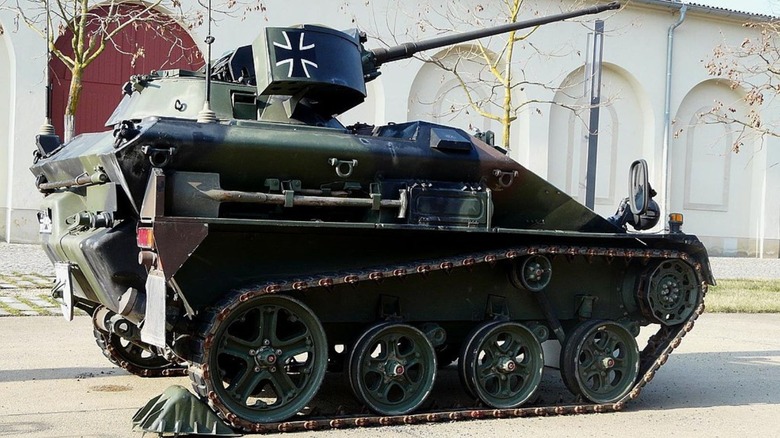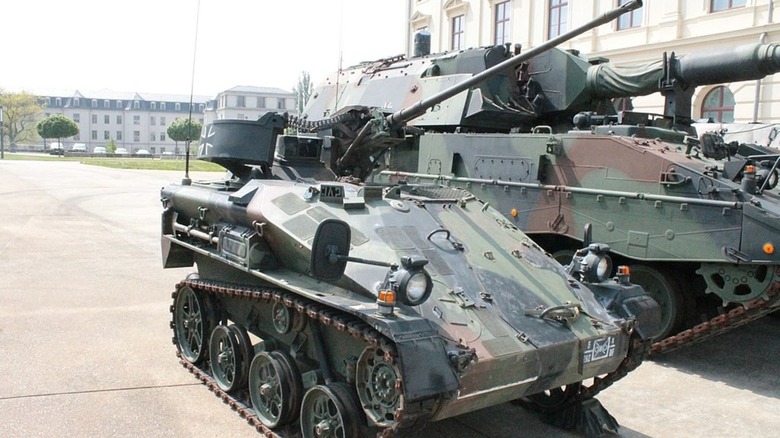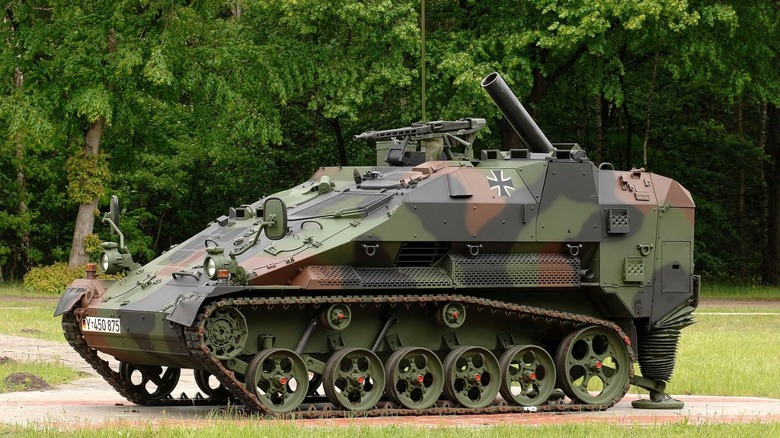Germany's Tiny But Powerful Tank: The Wiesel AWC
From the first tank offensive ever on September 15, 1916, at the Battle of the Somme to the devastating Battle of Kursk on July 5, 1943, tank warfare has shown heavily armored military vehicles' sheer power and resilience. While the primary design of a tank has been a large, imposing collection of metal and firepower strategically placed on versatile treads, some models were less threatening and were developed as the clever solution to a complex problem.
The German Wiesel Armoured Weapons Carrier (AWC) is a light armor vehicle designed with a very specific purpose. Unlike its larger and heavily armored counterparts of World War II, like the Panzer or Germany's modern main battle tank (MBT), the Leopard 2, the Wiesel wasn't meant for the front lines.
Produced during the 80s and early 90s, the tankette wouldn't be winning Germany any conflicts on its own. However, this tiny tank was a multifaceted piece of machinery that wound up seeing action as part of Germany's armed forces, the Bundeswehr.
[Featured image by Billyhill via Wikimedia Commons | Cropped and scaled | CC BY-SA 4.0]
The Practical Application of the Wiesel
While a tiny tank may seem impractical when you consider its much larger variant, the Wiesel, which earned its name by being small and agile and was built to give airborne troops a fighting chance against larger ground MBTs. The Wiesel's size allowed it to be transported via air travel and dropped onto a battlefield via cargo plane.
When paratroopers drop into battle, they're left vulnerable without the heavy firepower of armored vehicles. After all, the overall size and weight would make it impossible to fit something like the Leopard 2 into a NATO-approved aircraft cargo bay. The Wiesel, on the other hand, was designed with this purpose in mind, and that was one of the primary requirements engineers had to keep in mind when designing the tankette.
In times of war, the German Bundeswehr could load up the Wiesel and drop it alongside vulnerable airborne troops to protect them against enemy tanks. This meant that the Wiesel itself must be configured with firepower that could penetrate the thick armor of a rival tank while remaining light enough to be transported via air travel.
[Featured image by Stephencdickson via Wikimedia Commons | Cropped and scaled | CC BY-SA 4.0]
Wiesel's Configurations and Variants
In 1975, Porsche started producing Wiesel 1 prototypes, but funding issues stopped the program within three years. By 1985, the Bundeswehr revisited the concept, ordering 343 Wiesel tanks. The Wiesel 1 became the tankette of choice, its small frame equipped with anti-tank firepower.
Of the 343 produced, 210 were designed with Raytheon TOW wire-guided anti-tank missiles to fully support Germany's paratroopers. At 11.6 feet long, six feet high, and six feet wide, the Wiesel 1 was just big enough to house a driver, gunner, and either a secondary gunner or commander. It came in at 3.03 tons, lighter than the United States' Humvee.
Audi provided the Wiesel 1 engine, an 86 horsepower, 2.1-liter diesel capable of reaching 45 mph. Tanks weren't known for their speed, but the tankette required maneuverability to compensate for its vulnerability. It was as resilient as possible, though, with a steel armor chassis capable of resisting 5.56 mm and 7.62 mm ammo.
There were several variants of the Wiesel 1, including reconnaissance, anti-tank, fire support, and remote-controlled models. After the production of the Wiesel 1, the Wiesel 2 was designed as a slightly longer option with a 1.9L Volkswagen engine capable of 109 horsepower. Though generally the same height and width, the Wiesel 2 was 15 feet 8 inches longer.
There were 143 Wiesel 2's put into production by Rheinmetall Landsystema-GmbH, including an air defense model, a combat reconnaissance design, and variants built with mortar support.
[Featured image by Rheinmetall AG via Wikimedia Commons | Cropped and scaled | CC BY-SA 4.0]


